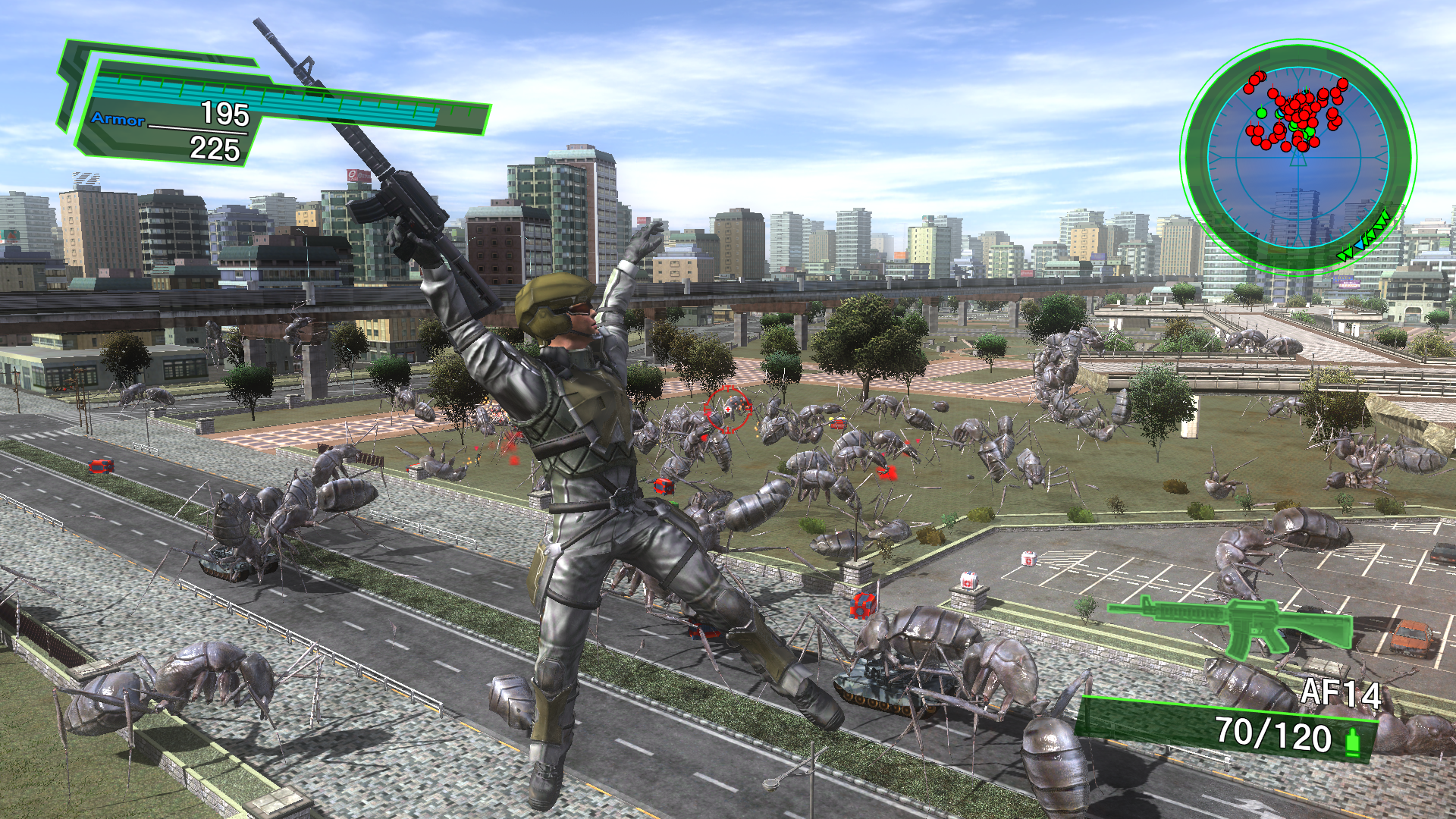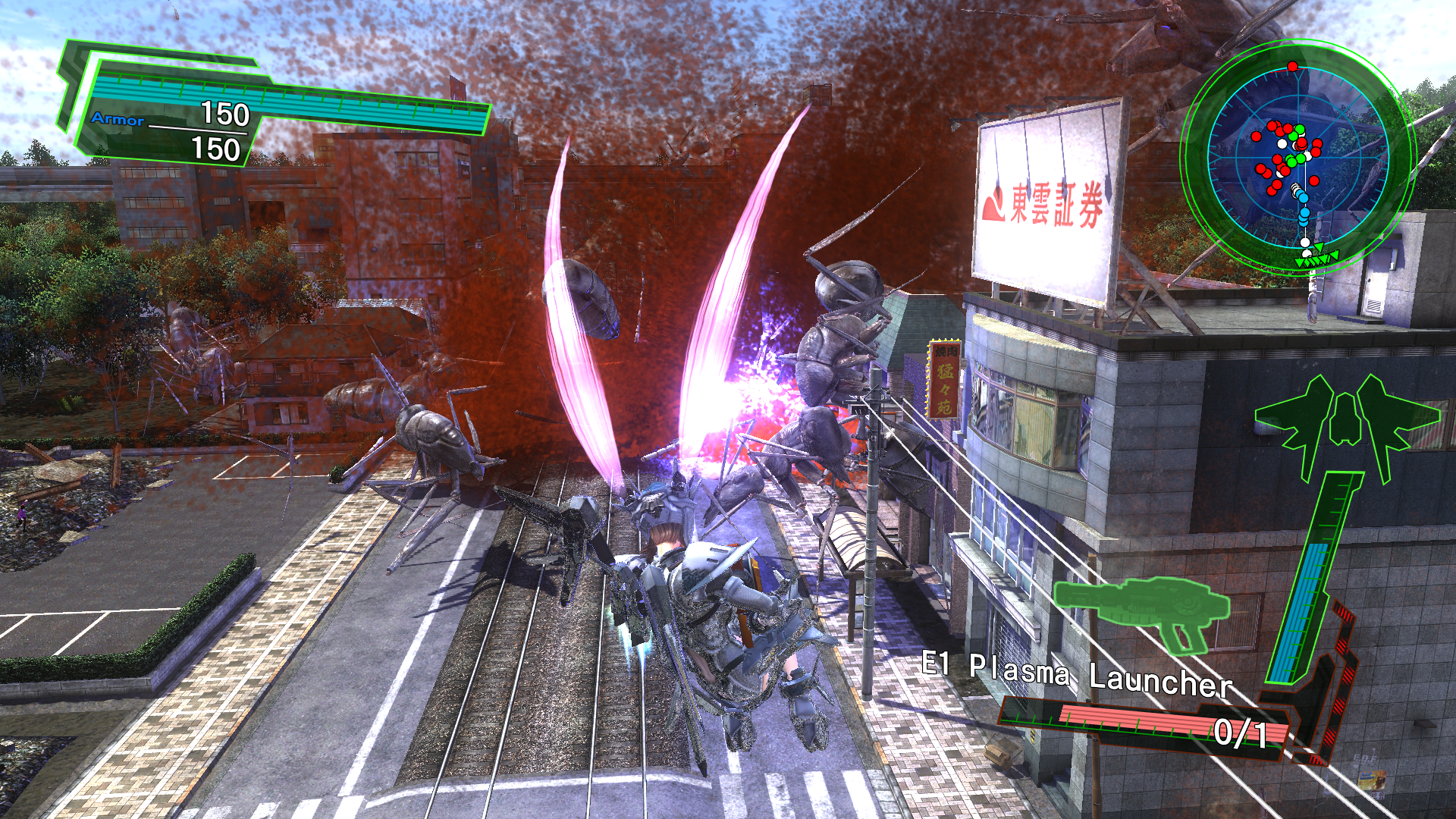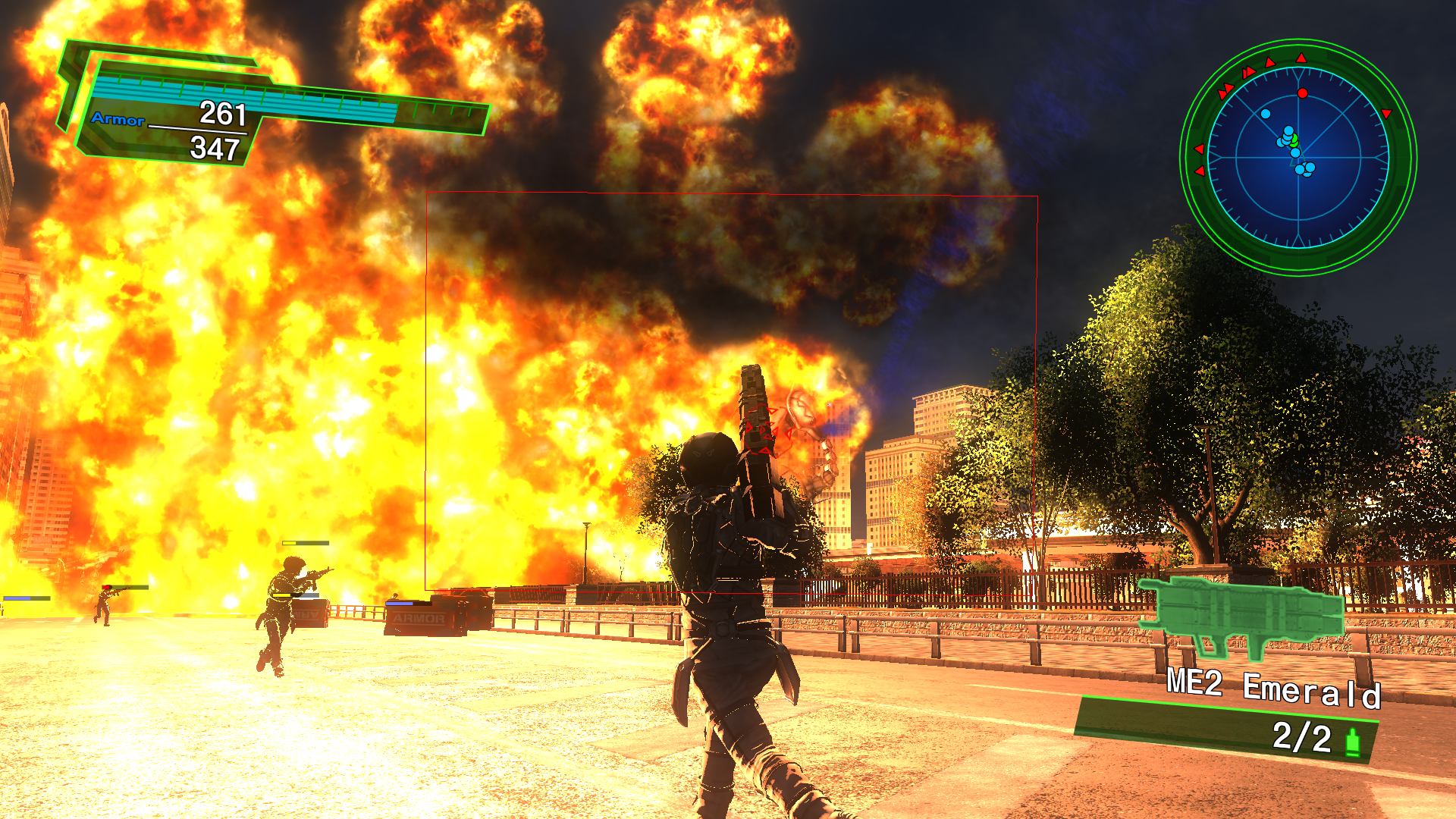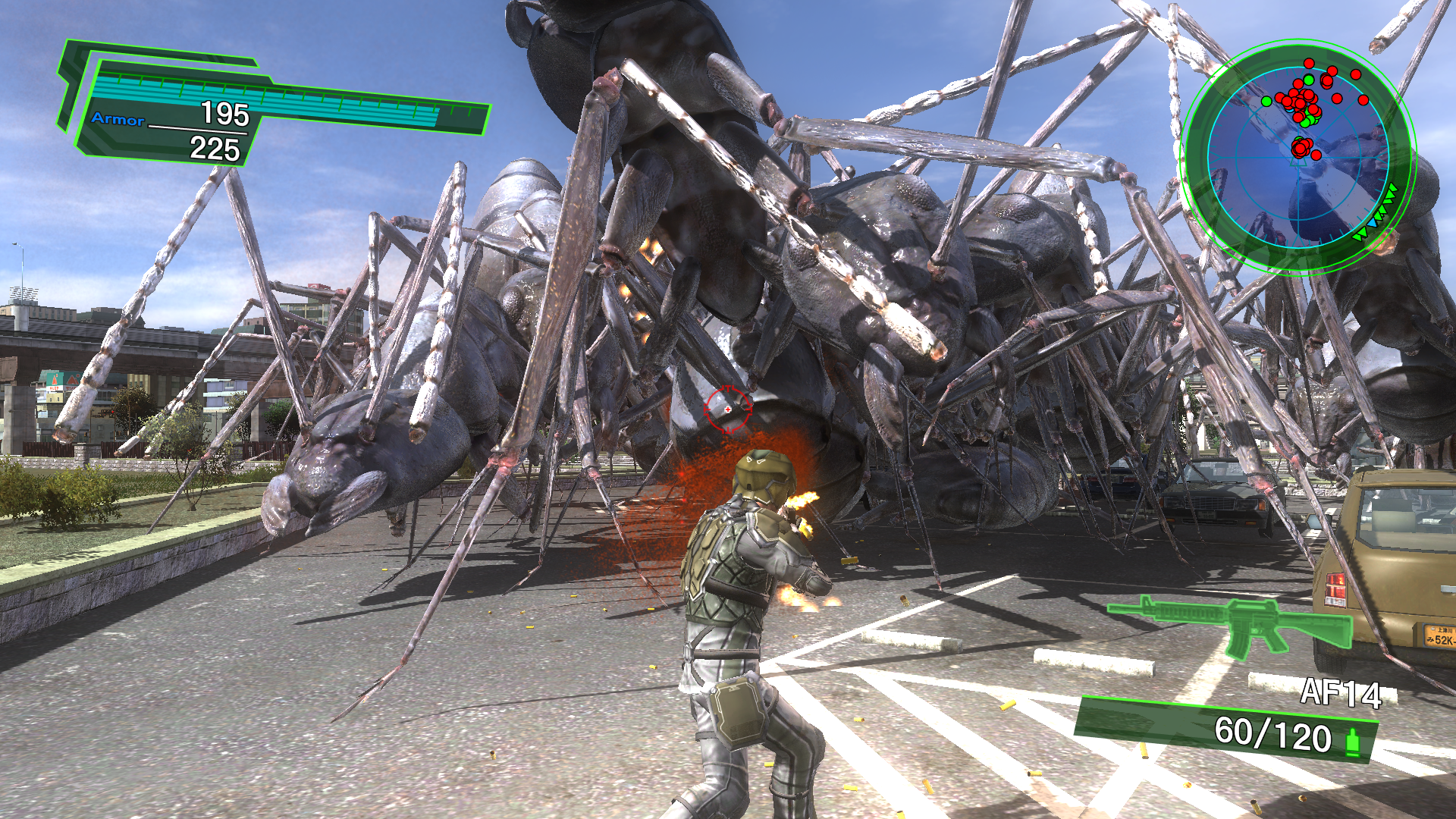Our Verdict
No polish or refinement, just lots of giant ants and plenty of ways to kill them. Ridiculously fun at its best, which it frequently is.
PC Gamer's got your back
Games often attempt to obscure their limitations. To effortlessly guide you through a level as if you'd chosen to follow the linear path. To hide the bugs and idiosyncrasies that would draw you out of the action. To immerse you in the world they've created. Despite all this – maybe because of all this – I find it incredibly endearing when the limitations conspire to undermine the pretense. It's a moment I like to celebrate by cheerfully shouting "Videogames!" at the screen.
EDF is very videogames. Its name – Earth Defense Force 4.1: The Shadow of New Despair – is about as videogames as you get. The action is unabashedly non-immersive, to the point that it feels like a celebration of raw videogame artifice and jank. Even the plot is peak videogames. Giant insects threaten the Earth. You, as a member of the Earth Defense Force, must shoot them.
It's the sort of game where you perform constant diagonal dodge rolls because it's slightly faster than walking. Or where you frequently ragdoll a block down the street because a friendly NPC walked in front of your rocket launcher. It's as if EDF's developers are working hard to stop it being thought of as anything more than a videogame – a commentary on the worthiness of compulsive loops and schlocky presentation. That intent (or lack of it) doesn't matter, because it does work and is fun. Sometimes that's enough. This is not the Dark Souls of anything, and I'm grateful for it.

Before each of the around 90 missions, you choose one of four classes. Ranger is the most basic, with an arsenal of guns and the ability to heal NPC troops. Or there's the Wing Diver, a jetpack-and-plasma-welding airborne trooper with no leg or boob armour ("Videogames!"). The other two classes are more of an acquired taste: the powerful Fencer is heavily armed, but slow and unwieldy; the Air Raider calls down airstrikes and vehicles, so is more suited for co-op play.
This is not the Dark Souls of anything, and I'm grateful for it.
Each mission takes place in an open level – usually a city, but sometimes a tunnel, beach or big field. Into that setting pours giant insects – usually ants, but sometimes spiders. (You're correct, spiders aren't insects. Remember: "videogames!") Later, there are robots. Later still, the ants are red. Your mission, always, is to kill the things. It's possible to hurt friendly NPCs through friendly fire, but it doesn't matter if you do. It's possible to completely destroy the surrounding area with your more powerful weapons, but you're never admonished or penalised. If you kill the bad things, you win. It's rarely more complicated than that.
Often it's worth touring the map, working towards the NPCs. Get close to a team leader, and the squad will fall in under your command. The AI is laughable, but it's good to have the additional firepower and, to be blunt, a few expendable bodies to distract the enemy. It's hard to feel bad about their deaths, because at no point does the game depict them as real, believable characters.

NPC #1: "Why fight if you know you're going to die?"
NPC #2: "I did it before I knew it."
All NPCs: "EDF! EDF! EDF!"
The action runs at 60 frames per second, and I haven't encountered any bugs. Mouse and keyboard support works well in missions, but is more fiddly in menus. There are few graphics settings – anti-aliasing is relegated to a binary yes or no, and more granular settings involve disabling shadows and, er, that's it. Moreover, EDF is clearly a descendant of the Playstation 2 era of design. It looks better than any PS2 game did, and can handle many more giant insects on screen, but the aesthetic looks out of place in this decade. It's also incredibly shonky, as the swarms of ants clip through each other, or spasmodically dance around any lampost or building they've decided to climb.
And yet, the flaws become easy to ignore when you're in the thick of it. The weapons feel powerful and explosive, and can be improved by grabbing pickups dropped by dead insects. This loot system ties into the core nicely. If you want the rewards, you're encouraged to constantly push into the throng to collect them as you go. EDF offers that same compulsive progression as a good ARPG: killing things feels good, leads to better weapons, leads to more good killing. It's generous, too. Harder difficulties promise improved weapons, of which each class has their own unique set. It's base and simplistic, sure, but that's exactly why it works.

I could do the safe thing, and give Earth Defense Force 4.1 a score in the 60s. I'd use this concluding paragraph to implore people try it anyway, all the while insulating myself from the criticism of anyone who hates it. Some people will hate EDF, and they're not incorrect. If you value polish and presentation, EDF offers neither. A well told story? Surprising, engaging setpieces? Even dialogue that doesn't resemble a malfunctioning AI chatbot? You won't find them here. Maybe you just want your new, £30 game to feel like it was made in this decade. These are not unreasonable requests.
Here's the problem with doing the safe thing: I really like EDF, despite its many quirks and limitations. I apologise in advance if you don't.
No polish or refinement, just lots of giant ants and plenty of ways to kill them. Ridiculously fun at its best, which it frequently is.

Phil has been writing for PC Gamer for nearly a decade, starting out as a freelance writer covering everything from free games to MMOs. He eventually joined full-time as a news writer, before moving to the magazine to review immersive sims, RPGs and Hitman games. Now he leads PC Gamer's UK team, but still sometimes finds the time to write about his ongoing obsessions with Destiny 2, GTA Online and Apex Legends. When he's not levelling up battle passes, he's checking out the latest tactics game or dipping back into Guild Wars 2. He's largely responsible for the whole Tub Geralt thing, but still isn't sorry.


